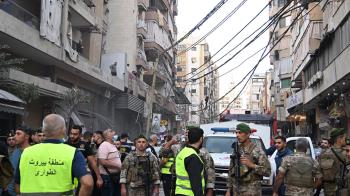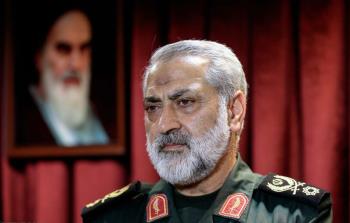Alwaght- The Iranian missile and drone drills in the middle of the nuclear talks between Tehran and the world powers were a measure the Islamic Republic made to boost its diplomatic position in the negotiations at a time the West and its regional ally Israeli regime have been threatening with military action should the talks fail.
The exercises, which were closely monitored by foreign media and analysts from the beginning to the last day, quickly realized the desired effects of deterrence and forcing the opposite side to retreat from the threats of the past days. After a few weeks of threats, in a very clear retreat, the Israeli foreign minister said that a "credible" military option is needed against Iran, meaning that what Tel Aviv has so far threatened Iran with was not more than media propaganda.
"It takes at least two years to prepare for an attack that could seriously damage Iran's nuclear program," a senior Israeli security official was quoted as saying by the New York Times.
Meanwhile, analysts agree that the way the missile drills were conducted, in which the world saw innovations, as well as sophisticated and precise details, were the main reason behind frustrating the threats and making Tel Aviv walk back from its initial ruthless positions.
Iran's firm defense
Certainly, the first important message of the recent exercise was to test the level of defense capability and improve it based on the latest initiatives and achievements of scientists and elites in the Iranian defense industry. Actually, the recent exercise showed that the Iran's enemies will have a very difficult and complex task passing through a strong defensive fortress, given the multi-layer defense systems. The Israeli media, such as intelligence-sourced Debkafile news website, paid attention to the use of defense systems in the the Prophet 17 military training such as the 15 Khordad missile system which is integrated with Samen advanced radar. The domestically-developed battery shot down RQ-4A US Global Hawk stealth drone in June 2019 over the Persian Gulf for trespassing the Iranian airspace. The exercises had a message to convey: The Iranian airspace is unsafe even for the enemy's stealth aircraft.
Wide war range
Another important message that the recent exercises had for the West and Tel Aviv, who were warned against any miscalculation, was Iran's readiness to expand the operational and temporal scope of any potential war. In the recent drills, the creation of underground trenches and defense facilities in important Iranian cities was one of the tactics practiced to counter the enemy in a possible conflict.
This means that the Islamic Republic will certainly not leave any military operation against its nuclear facilities unanswered, and on the other hand, it will not hesitate to expand the scope of the war to fully punish the aggressors.
"The difference between actual operations and military exercises is only a change in the angle of the missile launch," said Major General Hussein Salami, the commander of the Islamic Revolution Guards Corps (IRGC) speaking at the closing ceremony of the exercise.
Pouring boiled water in ant colony
Certainly, the scariest part of the missile test was the simulation of an attack on the Israeli Dimona nuclear site, which grabbed the attention of the Israeli media. During the drills, the missile forces successfully launched a simulated attack on Israel's Dimona nuclear center by simultaneously launching 16 ballistic missiles and five suicide drones.
The Israeli Jerusalem Post newspaper, referring to the IRGC drills and simulation of attack on the Israeli nuclear site, wrote that it demonstrates a new level of the Iranian military capabilities to attack Israel.
"This matters more than in the past because Iran is threatening to attack the Dimona nuclear facility, a dangerous escalation in rhetoric. It is also tied to Tehran revealing aspects of its drone program and new technology," reported the Jerusalem Post.
The report continued that practical use of drones by Iran-led bloc, Axis of Resistance, which includes Iraq, Syria, Lebanon, Palestine, and Yemen, for attacks on the American bases in Iraq and also Al-Tanf base in Syria in February and also penetration into the Israeli airspace using drones flown from T4 military base in Syria in 2018 are fully operational supports to the Iranian missile and drone response threats.
By simulating an attack on the Israeli nuclear facility, the Islamic Republic showed that it has accurate and calculated information about the location, defense mechanisms of the facility, and how it can passes through the defense systems, and that it is not showing off sole missile capability.
The long Israeli distance from Iranian territory, as well as its tight encirclment by the Resistance encirclment from Syria, Lebanon, and Gaza have made the occupied territories fully accessible to Iranian missiles, while Tel Aviv cannot effectively reach Iran. Due to shallow territorial depth, any incident in the Israeli nuclear facility can make a large part of the Israeli territory uninhabitable.
With the Israeli leaders suffering from a public acceptance crisis, they are trying to shift the attention by making such anti-Iranian remarks in quest for popularity. But Iran, while always ready to respond, does not take them seriously.
Although Iran does not see the Israeli regime the size of such threats, by the drills it sent a message, telling Tel Aviv that it is even prepared and has already laid plans for the most unlikely scenarios. Tehran made it clear that response to any aggression would not take a long time and that only a few seconds after the enemy's silly action of attacking its nuclear sites, missile barrages would rain on the aggressors.



























